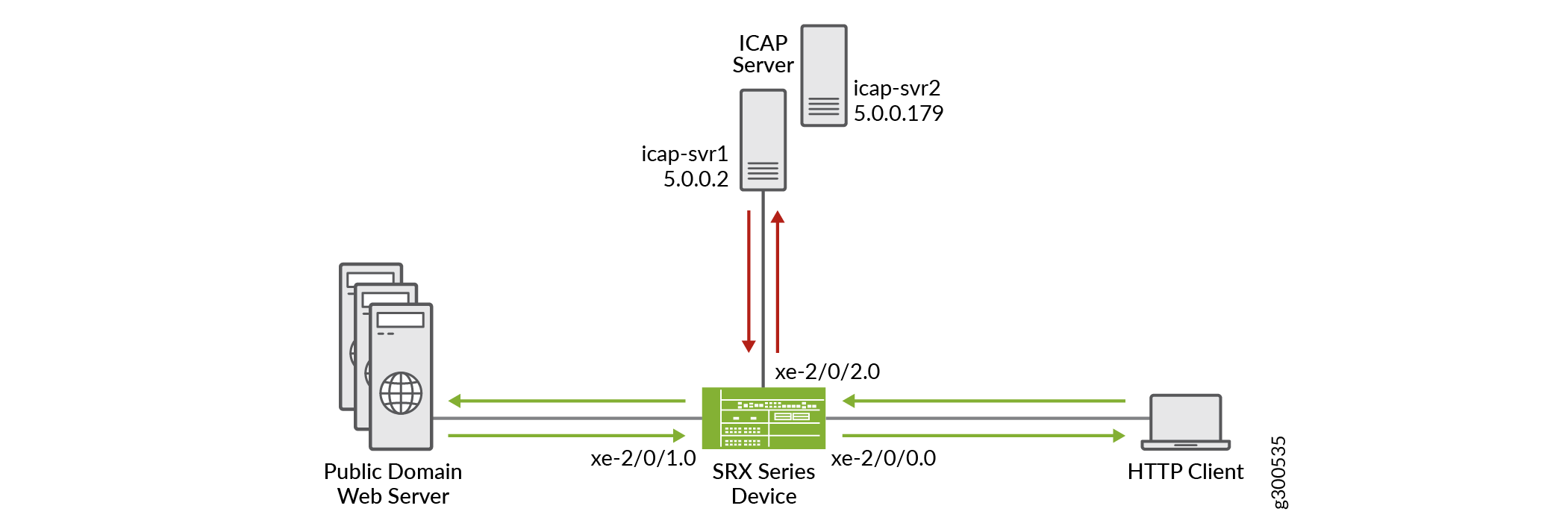

ICAP DLP DOWNLOAD
The Proxy server (2) forwards the file download request to the Server computer (3). The Client computer (1) initiates a file download from the Server computer (3). The Threat Emulation component that runs on some computer on the network. The ICAP Client component (4) forwards the block message from the ICAP Server component (5) to the Client computer (1).Įxample Data Flow in Server Response Modification (RESPMOD) Mode

The ICAP Client component (4) forwards the modified file from the ICAP Server component (5) to the Server computer (3). The ICAP Server component (5) returns one of these to the ICAP Client component (4): The Data Loss Prevention component (6) returns its verdict about the uploaded file. The ICAP Server component (5) forwards the uploaded file to the Data Loss Prevention component (6) for examination, whether the DLP policy allows this file to leave your network. The ICAP Client component (4) intercepts the uploaded file and sends it to the ICAP Server component (5). The Client computer (1) initiates a file upload to the Server computer (3). The Data Loss Prevention component that runs on some computer on the network. The ICAP Server component that runs on some computer on the network. The ICAP Client component that runs on the Proxy server (2).
ICAP DLP PDF
ICAP Server sends a block page to the ICAP Client.įor example, you can present a Check Point UserCheck page from the Threat Emulation, Anti-Virus, or URL Filtering Software Blades.įor example, your Data Loss Prevention engine can replace the DOCX file attached to an email with a PDF file.ĭefault Gateway or Proxy server can forward the HTTP Request / Response to its original destination.Įxample Data Flow in the Request Modification (REQMOD) Mode ICAP Server sends an error to the ICAP Client. This proxy acts as an ICAP client and asks an external server to check the executable for viruses before accepting it into its cache.

Users download an executable program through a caching proxy. In this case, it is an HTTP / HTTPS request that is being adapted, not an object returned by an HTTP / HTTPS response. Translation of web pages to different formats that are applicable for special physical devices (PDA-based or cell-phone-based browsers).įirewalls send outgoing HTTP / HTTPS requests to a service that makes sure the URI in the HTTP / HTTPS request is allowed. Hit Ctrl-] to exit the command and get back to the telnet prompt. Type "quit" to exit the Telnet session.Security Gateway as ICAP Client Use CasesĪ content provider provides a popular web page with a different advertisement each time the page is viewed.Note that if the OPTIONS response does not include the ISTag value, some proxy servers (such as Blue Coat) will fail with an invalid connection error. X-Include: X-Client-IP, X-Authenticated-User

If the Web Prevent server is successfully responding to ICAP, the response should look similar to the following (DLP version 11.5 in this example):.Note 2: If you are using RESPMOD (as opposed to REQMOD), modify the URL accordingly. Note 1: On some servers, depending on the Telnet options, the command may not echo to the screen, or you may need to press Enter twice. When the Telnet session opens, type the following and press Enter:.Open a Telnet session to the Web Prevent server, specifying the port number (default 1344):.(While there, click the Settings button for the server, and confirm the Port setting - default is 1344.) Check the status of the Web Prevent server in Enforce. Ensure that there are no errors and that all the processes are running and checking in with the Vontu Manager.In order to prove that the Web Prevent server is functioning properly with regard to accepting ICAP client connections, there are several actions which should show with relative certainty that it is healthy.


 0 kommentar(er)
0 kommentar(er)
